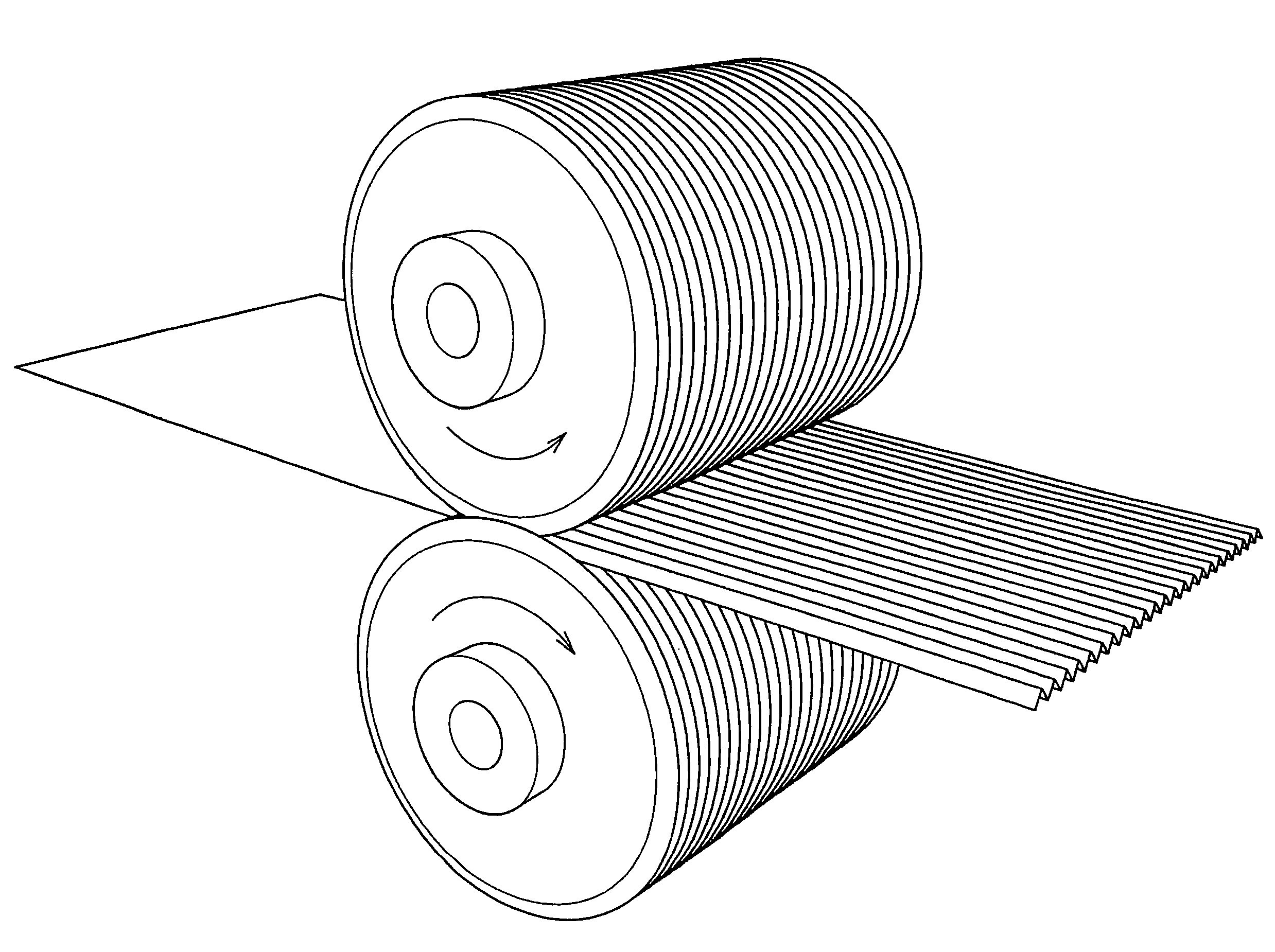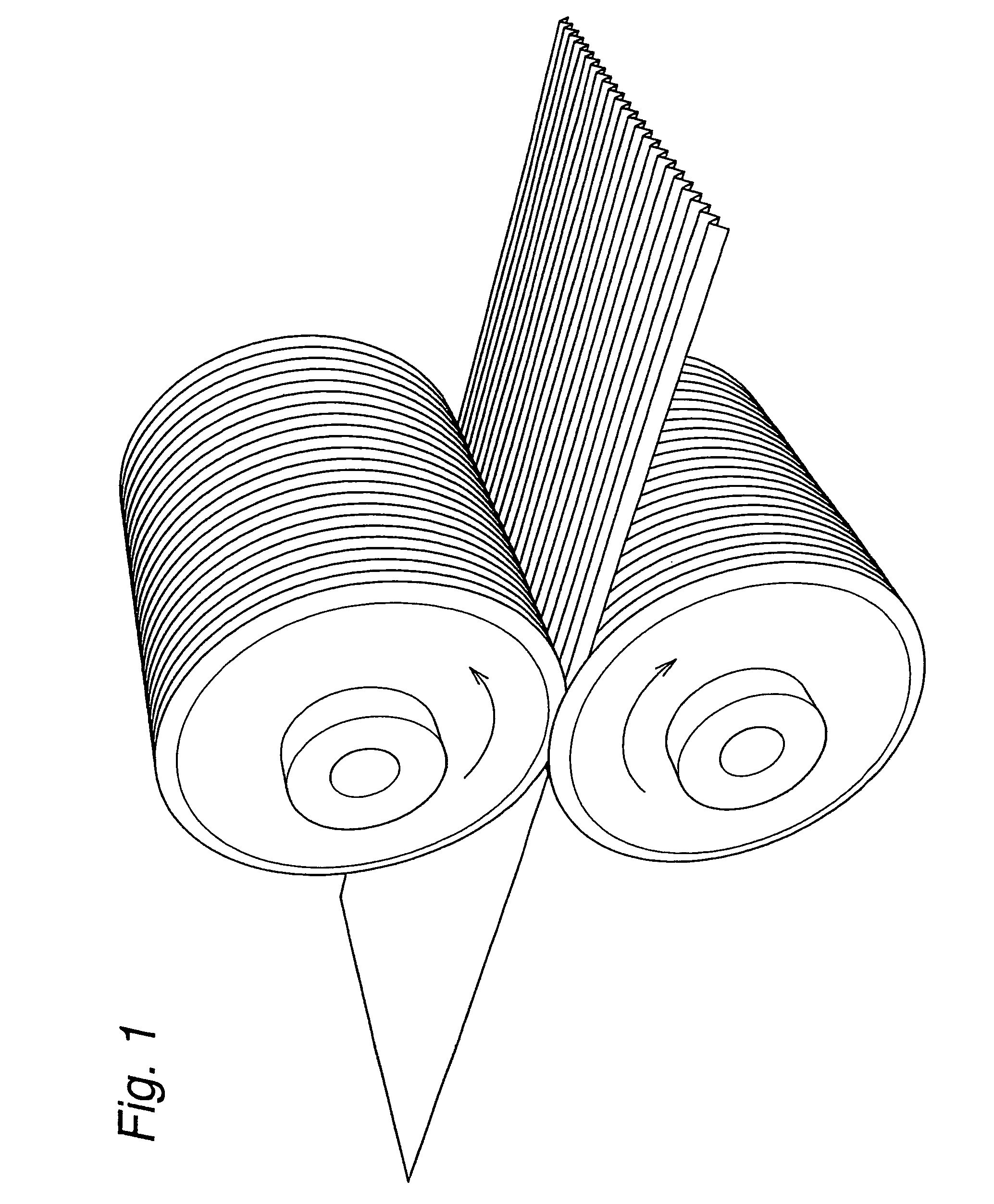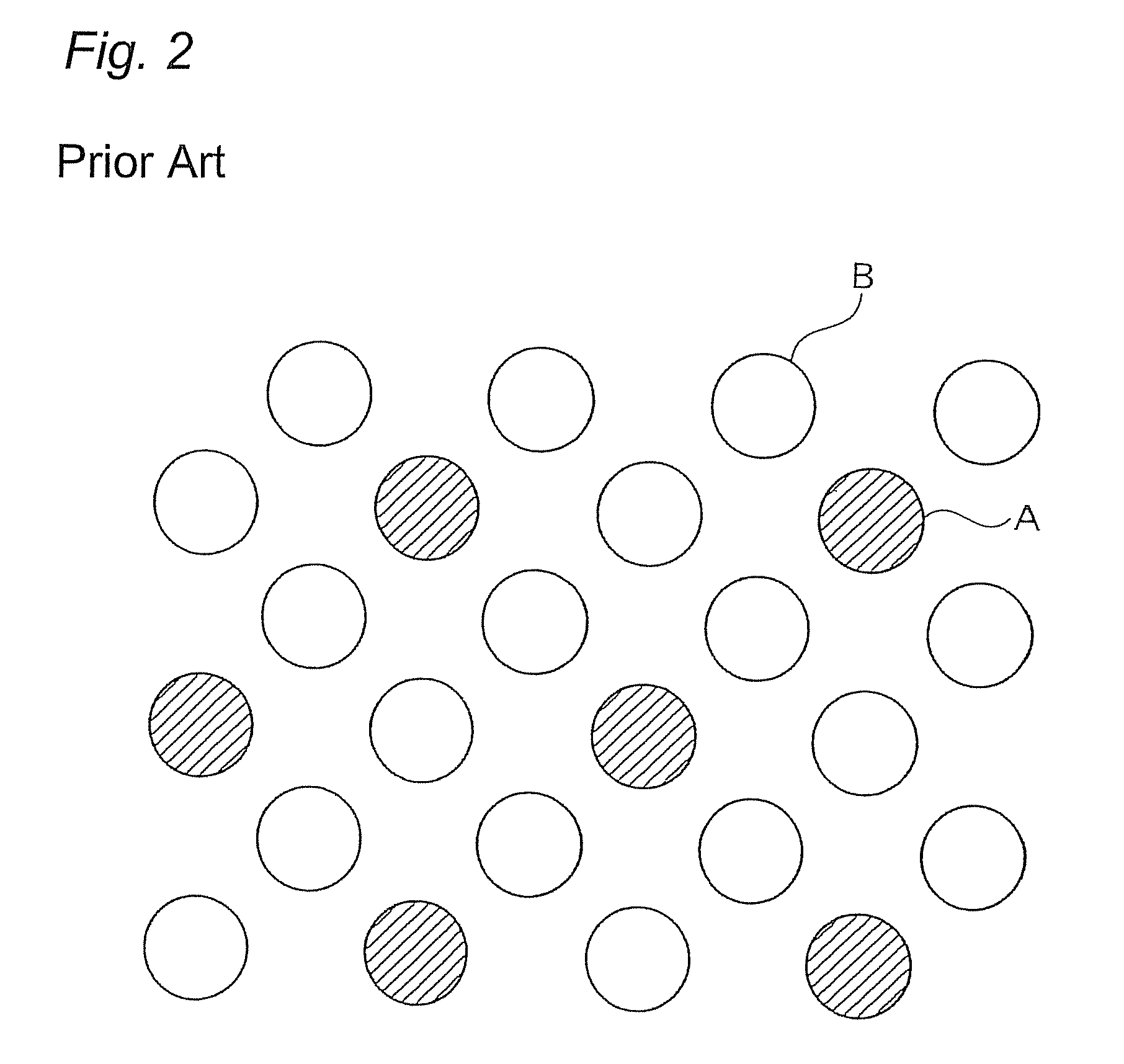Mixed fiber and stretch nonwoven fabric comprising said mixed fiber and method for manufacture thereof
a nonwoven fabric and mix technology, applied in the direction of weaving fabrics, textiles and papermaking, weaving, etc., can solve the problems of insufficient elastic properties for applications such as garments, failure to obtain nonwoven fabrics having desired fiber diameters, and difficulty in achieving the desired fiber diameter, etc., to achieve excellent heat sealing properties and productivity, low residual strain, and beautiful spin
- Summary
- Abstract
- Description
- Claims
- Application Information
AI Technical Summary
Benefits of technology
Problems solved by technology
Method used
Image
Examples
example 1
(1) Preparation of Spunbonded Nonwoven Fabric
[0165]96 parts by weight of a propylene homopolymer (hereinafter “PP-1”) that had MFR (ASTM D1238, 230° C., 2.16 kg load) of 60 g / 10 min, a density of 0.91 g / cm3 and a melting point of 160° C., and 4 parts by weight of a high-density polyethylene (hereinafter “HDPE”) that had MFR (ASTM D1238, 190° C., 2.16 kg load) of 5 g / 10 min, a density of 0.97 g / cm3 and a melting point of 134° C. were mixed together to give a thermoplastic polymer B-1.
[0166]TPU-1 obtained in Production Example 1 and the thermoplastic polymer B-1 were molten in respective extruders (30 mm in diameter) and subsequently melt spun by a spunbond machine (length in a cross direction of collecting surface: 100 mm) having a spinneret illustrated in FIG. 2. The spunbonding was performed at resin and die temperatures of 220° C., a cooling air temperature of 20° C., and a drawing air velocity of 3000 m / min. The resultant fiber mixture containing fibers A of TPU-1 and fibers B of...
example 2
[0178]Elastic nonwoven fabrics were produced and evaluated by the procedure illustrated in Example 1 except that TPU-1 was replaced by TPU-2. The results are set forth in Table 1.
[0179]An average smallest fiber diameter (μm) of the fibers of TPU-2 was determined by the procedure illustrated in Example 1 except that TPU-1 was replaced by TPU-2. The results are set forth in Table 1.
example 3
[0180]Elastic nonwoven fabrics were produced and evaluated by the procedure illustrated in Example 1 except that TPU-1 was replaced by TPU-4 and the thermoplastic polymer B-1 by a medium-density polyethylene (hereinafter “MDPE”) that had MFR (ASTM D1238, 190° C., 2.16 kg load) of 30 g / 10 min, a density of 0.95 g / cm3 and a melting point of 125° C. The results are set forth in Table 1.
[0181]An average smallest fiber diameter (μm) of the fibers of TPU-4 was determined by the procedure illustrated in Example 1 except that TPU-1 was replaced by TPU-4. The results are set forth in Table 1.
PUM
| Property | Measurement | Unit |
|---|---|---|
| diameter | aaaaa | aaaaa |
| temperature | aaaaa | aaaaa |
| temperature | aaaaa | aaaaa |
Abstract
Description
Claims
Application Information
 Login to View More
Login to View More - R&D
- Intellectual Property
- Life Sciences
- Materials
- Tech Scout
- Unparalleled Data Quality
- Higher Quality Content
- 60% Fewer Hallucinations
Browse by: Latest US Patents, China's latest patents, Technical Efficacy Thesaurus, Application Domain, Technology Topic, Popular Technical Reports.
© 2025 PatSnap. All rights reserved.Legal|Privacy policy|Modern Slavery Act Transparency Statement|Sitemap|About US| Contact US: help@patsnap.com



